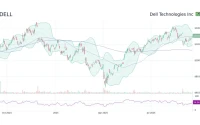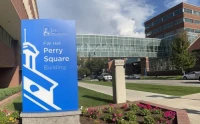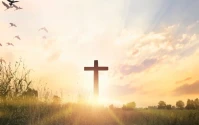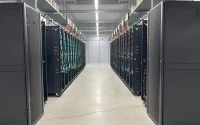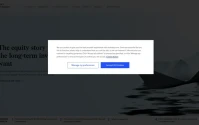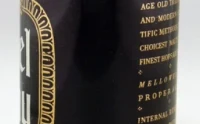I’ll be honest. When I first saw the notification pop up—a simple, colorful Instagram post announcing the return of "Reading Rainbow"—my initial reaction wasn't analytical. It was purely emotional. It was the digital equivalent of hearing a song from your childhood, a sudden and overwhelming surge of warmth. For a moment, I wasn't a futurist analyzing data streams; I was just a kid again, sitting on a shag carpet, completely mesmerized by LeVar Burton’s calm, reassuring voice telling me I could go anywhere and be anything, just by opening a book.
But then, the analyst in me kicked in. I looked closer at the details. The 19-year hiatus. The new host, the wonderfully named Mychal Threets. The debut date of October 4, 2025. And the delivery mechanism: not a legacy broadcast network, but KidZuko, a digital-native YouTube channel from Sony Pictures Television.
And that’s when I realized what we are truly witnessing here. This isn't just nostalgia. This isn't just a reboot. This is one of the most elegant and important software updates of our time.
We are watching a foundational piece of cultural source code—the operating system for childhood literacy and imagination—being ported from an analog, centralized system to a modern, decentralized, on-demand network. This is the technological equivalent of taking the original blueprint for the wheel and re-rendering it for a high-performance electric vehicle. The core function is the same, but the efficiency, accessibility, and potential impact have been amplified by orders of magnitude.
Think about the original "Reading Rainbow." It was a masterpiece of its era, running on the PBS platform from 1983 to 2006. It was appointment television. You had to be there, at a specific time, on a specific channel. Its reach was limited by the physics of broadcast towers and cable packages. LeVar Burton, in this system, was the perfect human interface—a trusted, authoritative, and deeply kind guide who bridged the gap between the screen and the page. He has called it the thing he is most proud of in his career, the "first line in my obituary," and he's right. He built something that lasted.
But the world’s network architecture has changed. The new system isn't broadcast; it's on-demand. It’s asynchronous—in simpler terms, it means a child no longer has to wait for a specific time slot; the magic is available the instant curiosity strikes, whether it’s on a tablet in the back of a car, a phone in a bustling city, or a smart TV in a quiet suburban home.
This is the kind of breakthrough that reminds me why I got into this field in the first place. It’s a perfect fusion of timeless human value and cutting-edge distribution.

The Digital Printing Press for Childhood Wonder
The New Interface for Imagination
Every great operating system needs a brilliant user interface. If LeVar Burton was the perfect UI for the broadcast generation, then Mychal Threets, "Mychal the Librarian," is the native UI for the digital one. The descriptions of him are fascinating; one observer called him "like if you crossed Bob Ross with Mr. Rogers and a unicorn-sprinkle cupcake." This isn't just a quirky soundbite; it’s a perfect articulation of the required specs for the role. It speaks to a blend of soothing creativity, radical kindness, and pure, unadulterated joy—the very emotional fuel that the internet’s best communities run on.
This new "Reading Rainbow" understands its new environment. It’s not just a show; it's a node in a network. Look at the preview video, populated with names like Gabrielle Union, Adam DeVine, Chrissy Teigen, and John Legend. This isn't just celebrity stunt-casting. It's a strategic activation of the network, using trusted modern voices to signal-boost the mission. The official mission statement says it all: "to motivate, help, and encourage kids to become avid readers with new episodes, new friends, new projects, and of course… new books!" It’s a protocol designed for engagement and interaction, not just passive viewing.
The shift from PBS to a dedicated YouTube channel is a move of breathtaking strategic clarity, and the speed and scale this enables is just staggering—it means the gap between a child’s curiosity and the spark of inspiration is now near-zero, a kid in rural Nebraska and a kid in New Zealand can access the same story, the same project, the same moment of wonder, creating a truly global, shared cultural experience that the old broadcast model could only ever dream of achieving.
Of course, with this incredible new power comes a profound responsibility. The open architecture of the internet is a double-edged sword. The core mission—the purity of fostering a love of reading for its own sake—must be shielded from the noise, the cynicism, and the relentless monetization that can define so much of the digital space. The guardians of this new "Reading Rainbow" are not just producing a show; they are curating one of the most important safe harbors on the internet.
This whole initiative feels like a historical echo. When the printing press was invented, it didn't just create a new way to make books; it fundamentally rewired society by decentralizing access to information. It took knowledge that was once locked away in monasteries and put it into the hands of the many. What we are seeing with "Reading Rainbow" is a similar leap. It’s taking a proven method for igniting a love of learning and migrating it to the most effective and ubiquitous distribution platform humanity has ever created.
What does a future powered by this upgraded system look like? Imagine a generation of kids for whom the library is not a building they visit, but a network they are always connected to. A generation for whom the joy of discovering a new world inside a book is as accessible, immediate, and engaging as any video game. That’s the promise here. It’s not about bringing back the past. It’s about launching the future. And I, for one, cannot wait to see it fly.
The Source Code of Hope, Recompiled.
This is more than a television show’s revival. It is a powerful proof-of-concept for the future. It demonstrates how we can take the most precious, analog parts of our shared humanity—empathy, curiosity, and the magic of a well-told story—and not just preserve them, but amplify them for a new generation using the very tools we are busy building. It’s the ultimate optimistic statement: technology doesn't have to replace our soul; it can be the very thing that helps us scale it.
Reference article source:
